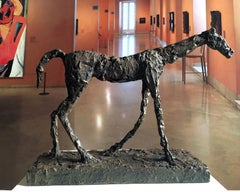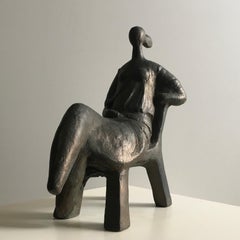Martin Duque
Recent Sales
2010s Impressionist Figurative Sculptures
Bronze
2010s Impressionist Figurative Sculptures
Bronze
2010s Outsider Art Figurative Sculptures
Bronze
Early 2000s Impressionist Figurative Sculptures
Bronze
1990s Impressionist Figurative Sculptures
Bronze
Early 2000s Impressionist Nude Sculptures
Bronze
1990s Impressionist Nude Sculptures
Bronze
Early 2000s Impressionist Nude Sculptures
Bronze
Early 2000s Impressionist Nude Sculptures
Bronze
Early 2000s Impressionist Nude Sculptures
Bronze
Early 2000s Impressionist Nude Sculptures
Bronze
2010s Impressionist Figurative Sculptures
Bronze
2010s Impressionist Figurative Sculptures
Bronze
2010s Impressionist Figurative Sculptures
Bronze
2010s Impressionist Figurative Sculptures
Bronze
2010s Impressionist Figurative Sculptures
Bronze
Early 2000s Impressionist Figurative Sculptures
Bronze
1990s Impressionist Figurative Sculptures
Bronze
1990s Impressionist Figurative Sculptures
Bronze
1990s Impressionist Figurative Sculptures
Bronze
Early 2000s Impressionist Figurative Sculptures
Bronze
Early 2000s Impressionist Figurative Sculptures
Bronze
Early 2000s Impressionist Figurative Sculptures
Bronze
Early 2000s Impressionist Figurative Sculptures
Bronze
Early 2000s Impressionist Figurative Sculptures
Bronze
Early 2000s Impressionist Figurative Sculptures
Bronze
Early 2000s Impressionist Figurative Sculptures
Bronze
Early 2000s Impressionist Nude Sculptures
Bronze
Early 2000s Impressionist Nude Sculptures
Bronze
Early 2000s Impressionist Nude Sculptures
Bronze
Early 2000s Impressionist Nude Sculptures
Bronze
Early 2000s Impressionist Nude Sculptures
Bronze
Early 2000s Impressionist Nude Sculptures
Bronze
Early 2000s Impressionist Nude Sculptures
Bronze
Martin Duque For Sale on 1stDibs
How Much is a Martin Duque?
A Close Look at Impressionist Art
Emerging in 19th-century France, Impressionist art embraced loose brushwork and plein-air painting to respond to the movement of daily life. Although the pioneers of the Impressionist movement — Claude Monet, Edgar Degas, Paul Cézanne, Berthe Morisot, Camille Pissarro, and Pierre-Auguste Renoir — are now household names, their work was a radical break with an art scene led and shaped by academic traditions for around two centuries. These academies had oversight of a curriculum that emphasized formal drawing, painting and sculpting techniques and historical themes.
The French Impressionists were influenced by a group of artists known as the Barbizon School, who painted what they witnessed in nature. The rejection of pieces by these artists and the later Impressionists from the salons culminated in a watershed 1874 exhibition in Paris that was staged outside of the juried systems. After a work of Monet’s was derided by a critic as an unfinished “impression,” the term was taken as a celebration of their shared interest in capturing fleeting moments as subject matter, whether the shifting weather on rural landscapes or the frenzy of an urban crowd. Rather than the exacting realism of the academic tradition, Impressionist paintings, sculptures, prints and drawings represented how an artist saw a world in motion.
Many Impressionist painters were inspired by the perspectives in imported Japanese prints alongside these shifts in European painting — Édouard Manet drew on ukiyo-e woodblock prints and depicted Japanese design in his Portrait of Émile Zola, for example. American artists such as Mary Cassatt and William Merritt Chase, who studied abroad, were impacted by the work of the French artists, and by the late 19th century American Impressionism had its own distinct aesthetics with painters responding to the rapid modernization of cities through quickly created works that were vivid with color and light.
Find a collection of authentic Impressionist art on 1stDibs.
Finding the Right Sculptures for You
The history of sculpture as we know it is believed to have origins in Ancient Greece, while small sculptural carvings are among the most common examples of prehistoric art. In short, sculpture as a fine art has been with us forever. A powerful three-dimensional means of creative expression, sculpture has long been most frequently associated with religion — consider the limestone Great Sphinx in Giza, Egypt — while the tradition of collecting sculpture, which has also been traced back to Greece as well as to China, far precedes the emergence of museums.
Technique and materials in sculpture have changed over time. Stone sculpture, which essentially began as images carved into cave walls, is as old as human civilization itself. The majority of surviving sculpted works from ancient cultures are stone. Traditionally, this material and pottery as well as metal — bronze in particular — were among the most common materials associated with this field of visual art. Artists have long sought new ways and materials in order to make sculptures and express their ideas. Material, after all, is the vehicle through which artists express themselves, or at least work out the problems knocking around in their heads. It also allows them to push the boundaries of form, subverting our expectations and upending convention. As an influential sculptor as much as he was a revolutionary painter and printmaker, Pablo Picasso worked with everything from wire to wood to bicycle seats.
If you are a lover of art and antiques or are thinking of bringing a work of sculpture into your home for the first time, there are several details to keep in mind. As with all other works of art, think about what you like. What speaks to you? Visit local galleries and museums. Take in works of public art and art fairs when you can and find out what kind of sculpture you like. When you’ve come to a decision about a specific work, try to find out all you can about the piece, and if you’re not buying from a sculptor directly, work with an art expert to confirm the work’s authenticity.
And when you bring your sculpture home, remember: No matter how big or small your new addition is, it will make a statement in your space. Large- and even medium-sized sculptures can be heavy, so hire some professional art handlers as necessary and find a good place in your home for your piece. Whether you’re installing a towering new figurative sculpture — a colorful character by KAWS or hyperreal work by Carole A. Feuerman, perhaps — or an abstract work by Won Lee, you’ll want the sculpture to be safe from being knocked over. (You’ll find that most sculptures should be displayed at eye level, while some large busts look best from below.)
On 1stDibs, find a broad range of exceptional sculptures for sale. Browse works by your favorite creator, style, period or other attribute.

